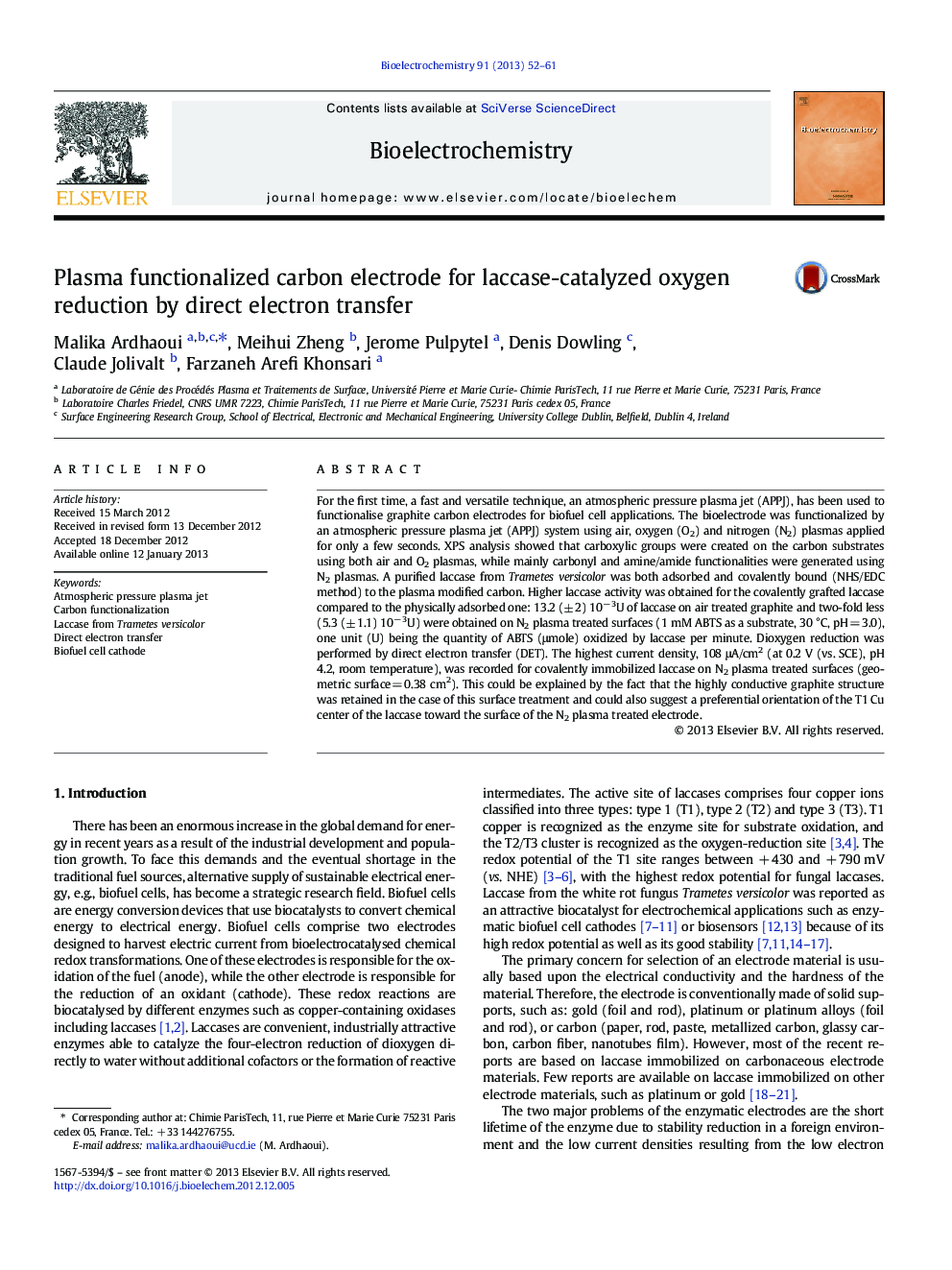| Article ID | Journal | Published Year | Pages | File Type |
|---|---|---|---|---|
| 1271382 | Bioelectrochemistry | 2013 | 10 Pages |
For the first time, a fast and versatile technique, an atmospheric pressure plasma jet (APPJ), has been used to functionalise graphite carbon electrodes for biofuel cell applications. The bioelectrode was functionalized by an atmospheric pressure plasma jet (APPJ) system using air, oxygen (O2) and nitrogen (N2) plasmas applied for only a few seconds. XPS analysis showed that carboxylic groups were created on the carbon substrates using both air and O2 plasmas, while mainly carbonyl and amine/amide functionalities were generated using N2 plasmas. A purified laccase from Trametes versicolor was both adsorbed and covalently bound (NHS/EDC method) to the plasma modified carbon. Higher laccase activity was obtained for the covalently grafted laccase compared to the physically adsorbed one: 13.2 (± 2) 10− 3U of laccase on air treated graphite and two-fold less (5.3 (± 1.1) 10− 3U) were obtained on N2 plasma treated surfaces (1 mM ABTS as a substrate, 30 °C, pH = 3.0), one unit (U) being the quantity of ABTS (μmole) oxidized by laccase per minute. Dioxygen reduction was performed by direct electron transfer (DET). The highest current density, 108 μA/cm2 (at 0.2 V (vs. SCE), pH 4.2, room temperature), was recorded for covalently immobilized laccase on N2 plasma treated surfaces (geometric surface = 0.38 cm2). This could be explained by the fact that the highly conductive graphite structure was retained in the case of this surface treatment and could also suggest a preferential orientation of the T1 Cu center of the laccase toward the surface of the N2 plasma treated electrode.
► COOH and carbonyl groups generation air/ O2 and N2 plasmas respectively. ► DET laccase biocathode has been manufactured. ► More laccase was covalently immobilized on COOH functionalized carbon surfaces. ► Higher current outputs were obtained on the N2 plasma treated carbon surfaces. ► Current densities up to 108 μA/cm2 were obtained in absence of redox mediators.
